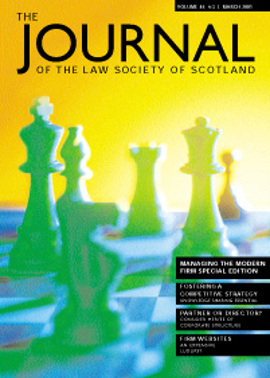Is your profit share less than £35,000?
The chart below indicates a huge range in profitability – between firms of different size, but more particularly within size groups. A quarter of sole principals, for example, recorded profits of under £27,000, and a quarter achieved profits in excess of £85,000.
There was a similar range amongst firms with more than ten partners. The 25% poorest performing firms earned average profits per partner of under £50,000, however the top 25% achieved profits greater than £100,000. The median (or mid-point) was £86,000.
This variation will be due to many factors, however the most important are likely to include:
- The firm’s gearing, that is the ratio of other fee-earners to profit-sharing partners;
- The number of chargeable hours fee-earners achieve each day;
- The average hourly rate they achieve;
- The level of overheads (excluding salaries) per fee-earner.
Gearing
The first of these, gearing, is illustrated in the graph at the top of the next page. This chart indicates that a quarter of sole principals and two to four partner firms have no other fee earners – the profit-sharing partners are the sole fee-earners, and their profits will be constrained by their own fee earning ability.
By contrast, a quarter of sole principals and five to nine partner firms have more than two other fee earners in addition to each profit-sharing partner, and a quarter of firms with more than ten partners have three or more. Curiously the two to four partner firms who participated do not have as good ratios.
The median across the firms is just less than one other fee earner for each profit sharing partner.
Those firms with high levels of gearing are likely to be those that achieve the best profits – provided the fee-earners are properly supervised and the firms have work that can be delegated to such fee-earners.
Total fee income (turnover)
The net result of the three underlying factors that influence income -gearing, chargeable hours and average hourly rate - are summarised in the chart of total fee income per profit-sharing partner. This is the total fees of the firm divided by the number of profit-sharing partners.
With a quarter of sole principals and two to four partner firms achieving total income per profit-sharing partner of under £100,000, it is not surprising that some firms earn such low levels of profit. The median is £143,000.
Overheads
The final chart summarises non-salary overheads per fee-earner, and the median across all firms is £25,000. This is a useful figure to work out in respect of your own firm. Added to a fee-earner’s salary, the salary of their secretary, and their proportion of central salaries (cash room, reception etc) it provides an indication of the total costs the fee-earner has to recover before they actually start generating any profit for the firm. In many cases the result is an alarming figure. If you assume a solicitor salary of, say, £25,000, £15,000 for a secretary, £5,000 for their share of other salaries and allow for NIC, it is easy to reach a total of £75,000 – merely to cover the fee-earner’s costs. This is a useful calculation in setting targets and can help fee-earners understand better why they are asked to bill what might otherwise appear to be a high level of fees in relation to their own salary.
All participating firms should have received a free copy of “The 2000 Survey of Law Firms in Scotland”, the detailed report upon which this article is based. Other firms can purchase a copy of the full report which contains a number of useful statistics and performance indicators. Priced at £80, this is available from Lisa Anderson at the Society. (e.mail lisaanderson@lawscot.org.uk). If you took part but have not received the full report, Lisa will send one out to you.
In early April the President will be writing to all firms inviting you to participate in the 2001 survey. Participation is free and carries a two hour CPD credit as well as a copy of the survey report. In recent years there has also been a prize draw, which will continue in 2001. The Society is grateful to Alex Quinn for agreeing to sponsor the prize in 2001.
John McCutcheon is Professor of Actuarial Studies and Head of the Department of Actuarial Mathematics and Statistics at Heriot-Watt University. He is a member of the Society’s Remuneration Committee and, since 1980, has conducted the annual Expense of Time Survey.
Andrew Otterburn is a management consultant and contributor to Update courses on practice management. His book on the Profitability and Financial Management of legal practices is published by the Law Society in London.
In this issue
- President’s report
- Managing the modern law firm
- Why conduct a legal practice as a limited company?
- Managing risks in the modern law firm
- Tread warily with mixed statements
- A worker’s fundamental right to holidays
- Taking the lid off
- Book reviews
- Is your profit share less than £35,000?
- Why some client work will never pay
- Firms must face up to IT risk
- Firm websites: help or hype?






